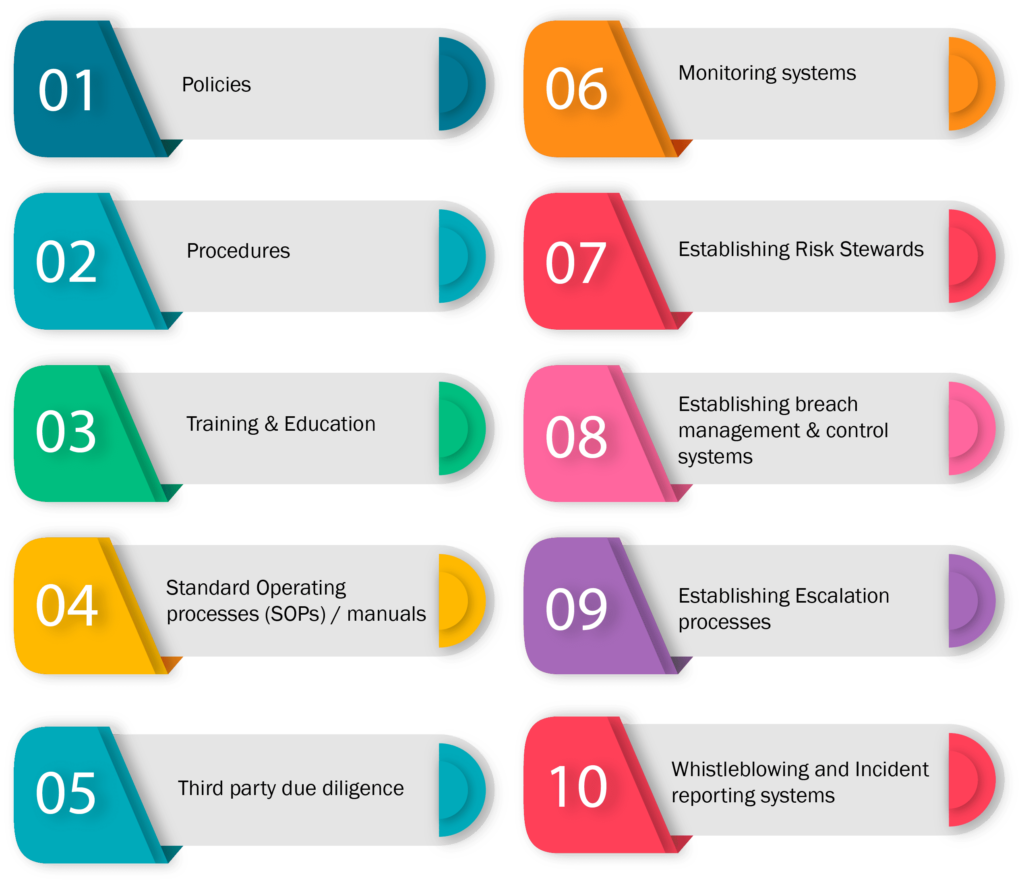Internal Risk Management - Ensuring Resilience Amidst Change and Growth
The starting point for all compliance plans is understanding what areas have the highest risks and potential for violations of Compliance standards. Identify. Analyze. Mitigate and Monitor
Establishing a regular and robust internal risk monitoring and management process is crucial for identifying and mitigating potential risks that could impact your company due to evolving business strategies, onboarding of new vendors and third parties, new regulations, expansion, etc., thus, rendering initial assessments of risks obsolete. Internal controls help companies to comply with laws and regulations, prevent fraud, keeps a check on adherence to policies and procedures, identification of capital shortages & any commercial set-backs. It also helps in generating accurate reports for leadership, setting forth your organization’s governance structures and in identifying the distribution of rights and responsibilities among different stakeholders by cultivating a company culture of integrity & ethics.
Lexlevel will Empower you with Compliance to Secure Success through our Internal Control Solutions:
We develop a personalised framework for your organisation that would answer all your compliance related issues. It would consists of documents such as compliance handbook & programs, internal policies & procedures, business systems that support compliance monitoring and reporting and risk management. In addition, the framework highlights business processes that clearly identifies compliance and risk owners, processes around incident and breach reporting, communication processes, escalation procedures and all other internal controls in place.
- Do you have a centralized Compliance Program with transparent policies and procedures?
- Does your organization comply with Industry laws and standards?
- Who is responsible in your organization for maintaining and proving compliance?
- How are employees and associated third parties held accountable to your company’s compliance policies and procedures?
- How frequently are your compliance policies and implementation program reviewed?

Our Corporate Compliance Services
All Services
Begin Your Corporate Compliance Journey With Us
Compliance that ensures growth.
FAQs on Internal Controls & Monitoring:
Internal controls are the set of policies, procedures, and systems implemented in an organization to safeguard the accuracy, reliability, as well as safety of the reporting of the financial position of an entity, secure its assets against loss, unauthorized use, and fraud, and provide assurance that regulations and rules about business operations have been followed. They help achieve business objectives with the control of risk.
Internal controls are important because they help avoid errors, fraud, and mismanagement. They ensure that the organization's financial and operational processes are efficient, compliant with laws, and aligned with company goals. Strong internal controls also increase accountability and transparency.
Internal controls are reviewed to ensure that they are working appropriately. It can be done in the form of audits, assessment, or some form of oversight on a constant basis. The monitoring of internal control systems will therefore help identify weakness or deficiencies which will be corrected in good time.
Internal controls should be reviewed regularly; it is deemed annual or upon material alterations in activities, processes, or laws and regulations. It also assists a system to assess for any weakness and changes it can implement within an internal control system to ensure continuity of efficiency and intent over business performance.
Typical categories of internal controls are:
Preventive Controls:
Those which are designed to prevent errors or fraud before they happen, for example, segregation of duties, access controls.
Detective Controls:
Identify and detect issues after they have occurred, for example, reconciliation, audits.
Corrective Controls:
Deal with and correct identified issues to prevent them from happening again; for example, the improvement of processes, training of employees.
